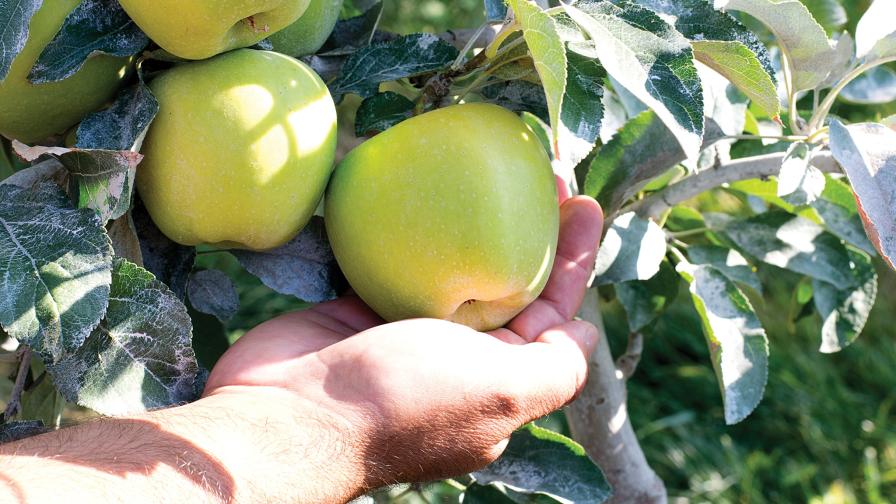Why Orange-Like Hybrids May Secure Future for Florida Citrus

Hybrid orange juice processing is conducted in the lab for chemical analysis.
Photo courtesy of USDA-ARS
The question, ‘What is an orange?’ is certainly not new to Florida. Research institutions, processors, and growers have long expressed interest in exploring the possibilities of what expanding the definition of orange might hold for the juice industry. The one foray Florida made into this arena three decades ago was to open up the orange juice standard to allow the ‘Ambersweet.’ That example frequently surfaces in conversations as a cautionary tale, and there is no longer interest in expanding the definition of orange juice one hybrid at a time.
The driving forces fueling today’s conversation address the industry’s survival in an HLB-endemic environment and the possibility of simultaneously increasing the quality of the final product by addressing the inclusion of hybrids based on fruit characteristics.
Six Key Factors to Consider
1. Sweet orange is thought to be the most widely planted fruit tree in the world, which drove massive investment in infrastructure and product development. Sweet orange is at the heart of Florida’s identity and culture. It is of great economic significance to Florida.
2. The sweet orange is itself a hybrid and is no longer considered a species. What we know to be sweet orange hails from a very narrow genetic background, leaving the industry vulnerable to widespread damage from pest and disease, to which sweet orange is susceptible.
3. Plant breeders have been working for decades to develop new hybrids that may have characteristics similar to sweet orange. Such hybrids may contribute to improving quality and supply. And some are showing commercially useful levels of HLB tolerance.
4. Current regulations, specifically the Federal Standards of Identity for “orange juice” requires the juice come from citrus sinensis. For pasteurized orange juice, 90% must come from citrus sinensis. Only 10% of the juice may come from reticulata or other hybrids.
5. There is great value in what consumers know as orange juice. This must be protected.
6. More supply is needed to produce the product and maintain infrastructure.
It is clear to many the industry needs to come together to begin discussions around these key factors and what, if any, regulatory changes might help secure a future for Florida’s orange juice sector.
New Varieties Development & Management Corporation (NVDMC) organized a meeting in April at the Florida Department of Citrus in Bartow that included representatives from Florida Citrus Processors, Florida Citrus Mutual, Florida Department of Citrus, Citrus Research & Development Foundation (CRDF), USDA-ARS, UF/IFAS, and several processing companies. This group delved into the science of how sweet orange came into existence, current domestic and regulatory definitions of orange juice, and the quality characteristics of some of the new hybrids.
It was agreed some of the hybrids were indistinguishable from orange, though they do not meet the current definition of orange. Other hybrids, though not entirely orange in their flavor profile, may contribute greatly to the quality and consumer acceptance of the final product.
This first meeting concluded that it may be preferable to revise the federal standards to allow for the inclusion of hybrids with key orange characteristics rather than require a classification or regulatory approval for each new hybrid. Draft language was crafted that will be circulated to the industry.
This revised definition approach would allow the brands and processing companies to develop innovative product blends that consumers may prefer while maintaining the integrity of what can be labeled as orange juice.
It also was clear that any regulatory changes would take place over a three- to four-year period, and the industry should be provided ample opportunity for comment along the way. Additional presentations and discussions will take place over the coming months at Florida Citrus Mutual, Florida Citrus Processors, Florida Citrus Commission, and the CRDF.
Much work remains to be done on the horticultural performance of new orange-like hybrids. Growers will need data and observable, replicated field trials before they have confidence they can produce an economically viable crop. Likewise, it will take some time before processors make their own determination of which hybrids work best in their proprietary blends.
This article is not intended to do more than introduce the topic and hopefully whet your appetite for more information on this ground-breaking topic. A whitepaper is available that goes into more depth. Readers may request a copy of the whitepaper by contacting NVDMC at [email protected]. Dr. Ed Stover is leading a cooperative effort with Dr. Fred Gmitter and other USDA-ARS and UF/IFAS staff to prepare an academic manuscript article for journal publication that will provide substantially more depth.
It also is timely that there is a funded project through National Institute of Food and Agriculture titled “Accelerating implementation of HLB tolerant hybrids as new commercial cultivars for fresh and processed citrus” (by Elizabeth Baldwin, Ed Stover, Jinhe Bai, Anne Plotto, John Manthey, USDA-ARS Horticultural Research Laboratory; Rhuanito Ferrarezi, Fred Gmitter, and Yu Wang, UF/IFAS Citrus Research and Education Center; Mike Rouse, University of California, Riverside; and Goutam Gupta, New Mexico Consortium). The results of this project will undoubtedly prove invaluable through this process.










